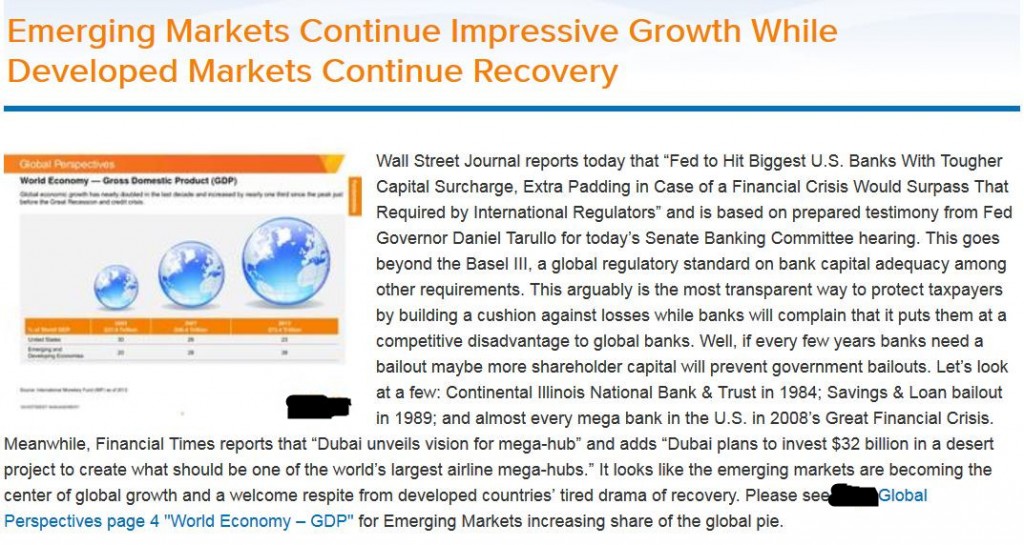Financial bloggers sometimes ask me, “How can I take classic topics and make them sound new?”
As Donald Murray says in Writing to Deadline: The Journalist at Work,

 “All stories, even those in the Bible, are old stories. But there are ways that we can make them new, for the moment, both for our readers and for ourselves.”
“All stories, even those in the Bible, are old stories. But there are ways that we can make them new, for the moment, both for our readers and for ourselves.”
Inspired by Murray’s sections on “Old Stories Seen in New Ways” and “Old Stories in a New Form,” I suggest some approaches for you.
1. “Change the angle of vision”
Look at your topic from a different person’s perspective. For journalists, Murray suggests that you “change the angle of vision from the senator to the senator’s aide, the view of the opponent, the voter, the lobbyist, the citizen affected by the vote.”
How can this apply to you? Let’s say you’re writing about education savings plans. Instead of writing from the perspective of the parents who are your clients, you could take the students’ perspective, in terms of issues such as how much control they’ll have over the funds. Or, you might look at how providers price the plans and their impact on the plan’s relative attractiveness.
2. Write a case study.
Murray suggests that you “focus on a single person.” You can apply this by writing a case study that shows how you’ve solved a problem for a specific person. Of course, make sure you don’t violate your clients’ privacy or your regulators’ rules about testimonials.
3. Look at rejected alternatives.
For journalists, Murray says, “Focus on the background instead of the foreground—the technology available, considered, rejected, and used in the trauma center.”
You can do the same thing with one of your topics. For example, if you prefer a certain kind of trust for transferring client assets, you might write about one or more of the trusts that you typically ignore.
4. “Tell the story through an interview.”
Interviews benefit from the fresh perspective and personality of someone new. Plus, they may offer specific details that your blog posts and articles lack. Consider interviewing someone who’s an expert in a technique, product, or service that you use.
Or, go to the other end of the spectrum to interview an individual who suffered because of their lack of expertise. An interview with an individual client might also demonstrate the benefits of something you recommend. A personal story can make the benefits seem more real. However, again I suggest that you check with your compliance expert to avoid violating the rules about testimonials.
5. Write the story in a different form.
Changing formats could give your topic new life. Murray suggests, “Write the story as a rhetorical form central to the story: a police report, a political speech, a company memo, a nursing report, a job application, a letter by a participant to a friend.”
For example, if you’re railing against a specific product or service, you could imagine a memo detailing the reasons why it’s good for the seller even if it doesn’t benefit the buyer.
Or, you might create a nursing home’s report on the finances and experiences of someone who bought long-term care insurance vs. someone who didn’t.
There are lots of possibilities. Another is the approach taken by Chuck Rylant in How to be Rich: The Couple’s Guide to a Rich Life Without Worrying About Money . Chuck wrote a fictional story to illustrate lessons of financial planning. However, when you write fiction, make sure you label it as fiction.
. Chuck wrote a fictional story to illustrate lessons of financial planning. However, when you write fiction, make sure you label it as fiction.
If you’ve used these techniques…
…I’m curious to learn about your experience with the techniques. How have they worked for you?
Disclosure: If you click on the Amazon link in this post and then buy something, I will receive a small commission. I only link to books in which I find some value for my blog’s readers.


